
Tell us what you need to find a matching loft conversion specialist

Get free quotes from professionals near you

Compare offers and choose the one that best matches your need
- Householdquotes.co.uk
- Loft Conversion
- Types of Loft Conversion
- Hip to Gable Loft Conversion
- Hip to Gable Loft Conversion Cost
How Much Does a Hip To Gable Loft Conversion Cost In 2024

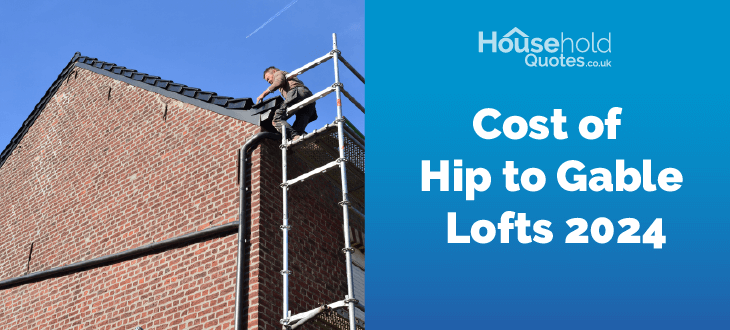
- A hip to gable loft conversion costs around £45,000 for a 2-3 bedroom house with a loft size of 20-30m2. If you opt for a loft size of 40m2 with luxury finishes, the price can increase to £80,000.
- Supply costs are decreasing by 2% as of 2024 but remains the most expensive factor of your loft conversion.
- You can save money on your loft conversion by setting a budget, planning for foreseen issues, opting for basic materials and finishes and DIY-ing certain projects like painting
- Banks offer financial loans to finance the hip to gable loft conversion costs.
If you're considering converting your loft into a spacious and functional living area through a hip to gable loft conversion, it's important to have a clear understanding of the costs involved before embarking on the process.
This comprehensive guide, we'll provide you with a breakdown of hip to gable loft conversion costs in 2024, covering everything from materials and labour to planning and building regulations.
By providing you with valuable insights and tips for estimating costs, we'll help you make a well-informed decision about the conversion process. Converting your loft can add significant value to your property, especially with the current housing trends. But it's crucial to understand the potential expenses involved to avoid any surprises along the way.
Whether you're on a tight budget or willing to invest in a high-end conversion, this guide will help you in estimating the costs accurately and prepare you for a home improvement journey that will transform your living space and increase your home's value.
- Describe your needs
- Get free quotes
- Choose the best offer
It only takes 30 seconds



- How Much Does a Hip to Gable Loft Conversion Cost in 2024?
- What Factors Affect the Cost of a Hip to Gable Loft Conversion?
- Building Regulations and Planning Permissions
- Types of Hip to Gable Loft Conversions
- Ways You Can Reduce the Costs of Hip to Gable Loft Conversion
- Financing a Hip To Gable Loft Conversion
- Compare Hip to Gable Loft Conversion Quotes
- Frequently Asked Questions
How Much Does a Hip to Gable Loft Conversion Cost in 2024?

On average, a hip to gable loft conversion costs around £45,000 in the UK. This cost is based on a single-room loft conversion of approximately 20m2 for an average 2 bedroom house. However, the cost of a hip to gable loft conversion can increase up to £80,000, depending on various factors such as the location of your property, the size of your loft, your home type and the materials and finishes you choose.
The cost will escalate further if you wish to add additional loft conversions, such as a dormer or mansard, to your gable end conversion.
The hip to gable loft conversion cost is generally higher than that of any other type of loft conversion. This is due to the extensive work required on the roof. In a gable end conversion, the sloping roof is replaced with a vertical brick wall to create more loft space.
Altering your roof's structure will require you to consider the cost of labour, supplies, and any additional costs such as surveyor, architect, and building inspection fees
Calculating hip to gable loft conversion costs based on square metre
Pricing a hip to gable loft conversion may seem complicated, but it's helpful to know the average cost per square metre. This information can help you estimate roughly how much your hip to gable loft conversion costs.
The cost of a loft conversion varies between £2,000 and £4,000 per square metre. However, hip-to-gable conversions are more expensive and may cost around £3,000 to £4,000 depending on the loft's size and the materials used.
The average size of a UK loft conversion ranges from 20m2 to 30m2 and is typically associated with end-of-terrace and semi-detached homes. The standard loft size for detached homes is 40m2, but it can be smaller based on your specific needs.
With this information, we can provide you with a rough estimate of how much your hip-to-gable loft conversion might cost.
| Home Type | Average Cost |
|---|---|
| 2 bedroom Semi-Detached | £35,000 to £50,000 |
| 3 bedroom Semi-Detached | £50,000 to £65,000 |
| 4 bedroom Detached | £40,000 to £55,000 |
| 5 bedroom Detached | £60,000 to £75,000 |
If you want an accurate estimate of the cost of the conversion for your home, we recommend consulting an architect or builder for a site inspection and a detailed estimate that covers all expenses, including materials, building fees, scaffolding expenses, interior design, and more.
Added value to your home
The hip to gable loft conversion cost initially seems pricey at first, but it offers several benefits to your home. One of the most appealing advantages of a gable end loft conversion is that it can increase your home's value. A 10% increase in floorspace can boost your property’s value by 5% according to Nationwide.
By transforming your loft into an additional room, you can expect to see a 10-20% increase in the value of your home, this may further increase with the addition of an ensuite. The percentage added is dependent on your home type and the number of existing bedrooms you have:
| Property Type | 2 bed to a 3 bed | 3 bed to a 4 bed |
|---|---|---|
| Semi-Detached | 17% | 11% |
| Detached | 13% | 12% |
The average household size in the UK is 2.36 people according to GOV.UK. As a result, many home buyers prefer a house with three bedrooms instead of two.
By transforming a once under-utilised space into a functional bedroom, home office or playroom, you will drastically increase the marketability of your home!
What factors affect the cost of a hip to gable loft conversion?
Several factors will influence the cost of your hip to gable loft conversion.
These include:
- The size of your home and loft space
- Your location
- Labour costs
- Supply costs
- Decorating and finishing
- Additional features such as a bathroom or built-in storage
- Permits and building inspections
- Architect and building surveyor fees
It is important to note that high-quality materials such as hardwood flooring, spiral staircases, or bespoke furniture will escalate the cost. If you are on a budget, keep these factors in mind. Opting for basic finishes, reusing furniture, and using standard finishes will help you lower your hip to gable loft conversion cost.
Recognizing and understanding these factors before starting any loft conversion project is essential. By doing so, you can make informed decisions that will help you save money, time, and stress during the conversion process.
Budgeting and understanding the prices associated with each section of the project will enable you to plan effectively and avoid unpleasant surprises. Below, we discuss the factors influencing the cost of your hip to gable loft conversion.
Location
Urban areas typically have higher construction costs due to the premium charged by building experts who live in and around cities like London. Transporting materials can also be a challenge in densely populated areas.
By living in a city you will see an increase in your hip to gable loft conversion cost. On the other hand, rural homes must factor in the costs of shipping and transporting materials and labour to their location.
Labour Costs
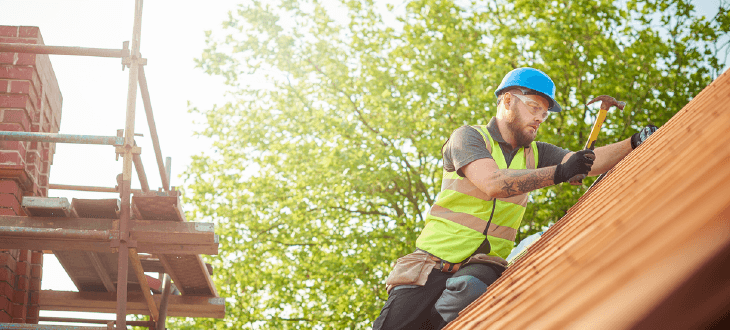
On average, the labour cost for household loft conversions can range from £14,000 to £35,000. The price of labour can vary depending on factors such as the size of the property, location, and additional features like built-in storage units, en-suites, and conversion elements like mansard or dormer extensions.
Labour accounts for 40-45% of a hip to gable loft conversion cost, according to Robin Callister of Urban Architects.
Tradespeople and contractors typically charge their clients on an hourly basis. It's worth noting that the more experienced and qualified a tradesperson is, the higher their fee is likely to be. When it comes to loft conversions, it's crucial to select a qualified tradesperson or contractor who can ensure that the conversion is structurally sound and complies with the relevant building regulations.
| Trade | Hourly cost |
|---|---|
| Builder | £20 to £60 |
| Electrician | £50 to £120 |
| Plumber | £30 to £50 |
| Decorator | £20 to £50 |
| Tiler | £20 to £35 |
| Plasterer | £30 to £50 |
The duration of labour will affect the hip-to-gable loft conversion cost.The timeline depends on several factors, such as weather conditions, the availability of labour and materials, the size of the loft conversion, planning permits, and building inspections.
On average a hip to gable loft conversion will take 8 to 12 weeks to complete. We have broken down a typical timeline of a hip to gable loft conversion:
| Timeframe | Labour |
|---|---|
| Week 1 | Preparing materials, erecting the scaffolding |
| Week 2 | Restructuring the existing roof, adding in the gable wall |
| Week 3 to 4 | Installing windows, staircase and floors |
| Week 5 to 7 | Installing pipes and electrical cables |
| Week 8 to 12 | Decorating, carpentry, and tiling |
To better understand the timeframe, and hopefully help you with your loft conversion budget we have broken down the estimated time for each job in a hip to gable conversion:
- Putting up the scaffolding: One day
- Restructuring the roof: One to two weeks
- Installing windows: One to two days
- Installing staircase: Two to three days
- Installing flooring: One day
- Electrics: Two to three days
- Fitting Bathroom: Four to five days
- Decorating and finishing: Three to four days
If you're planning to convert your loft space, keep in mind that tradespeople usually charge by the hour. So, it's essential to factor in the duration of the project. Remember, the longer it takes, the higher the cost for hip to gable loft conversion. Make sure you plan accordingly to avoid any unwanted surprises.
Supply Costs
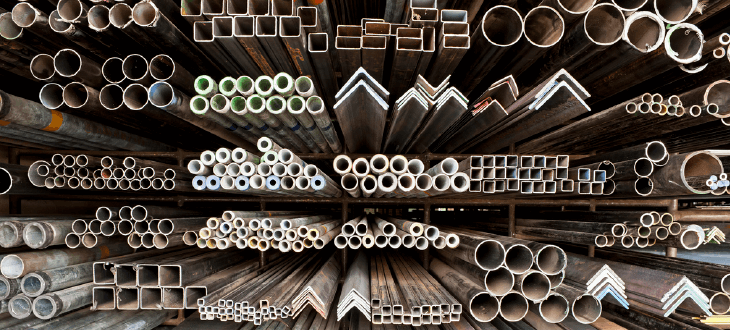
Construction supplies are the materials that assist in the construction of structures which is essential for building your loft conversion in the UK. The price of these materials can vary based on several factors such as location, availability, and quality.
As of 2024, there has been a 2% decline in materials, according to Building Materials and Components Statistics. Although this can positively impact your hip to gable loft conversion, there has also been a reduction in the delivery of supplies due to the decline in materials.
As a result, the construction timeline may be extended due to the decrease in material deliveries.
The cost of materials used in your loft conversion depends on your property's size and the material’s quality. High-quality materials such as hardwood floors, bespoke staircases, or spray foam insulation will increase cost.
To give you an idea of the different costs for supplies, we have provided a table below. Please note that the cost range is based on the quality and amount of material used for your hip to gable loft conversion.
For instance, if you plan to build a 40-square metre loft using high-quality materials like hardwood flooring, the cost per square metre would be around £60.00.
| Materials | Average Cost |
|---|---|
| Scaffolding | £131 per m2 |
| Structural beams, joists and masonry | £1,500 to £4,000 |
| Insulation | £5 to £90 per m2 |
| Windows | £160 to £2,000 per window |
| Flooring | £7 to £60 per m2 |
| Staircase | £350 to £9,500 |
| Internal doors | £30 to £180 per door |
| Electrics | £500 to £1000 |
| Bathroom | £4,500 to £6,000 |
| Decorating materials | £800 to £1,600 |
Prices for structural beams, joists, and masonry: These are essential components for creating a structurally sound loft. They provide support for walls, ceilings, and floors. The price for these components in your loft relies on two main factors.
Firstly, the amount of material required for your hip-to-gable loft conversion. Some attics only require minor replacements, while others may need entire replacements due to damage caused by moisture or mould.
Secondly, the quality of materials used. Joists and beams can be made of either steel or timber, with steel being the more durable option. However, timber is a flexible and budget-friendly material for tricky loft spaces.
Concrete bricks are highly recommended for loft conversions as they have the best weight-bearing capacity. The average price per block for a 215mm thick hollow heavy block costs between £3 and £5.
Loft Staircase: There are several building requirements that your current pull-down attic ladder does not meet for your loft staircase. These requirements include head height, width, fire safety, location, and step height. If you do not already have a loft staircase, you must budget for one.
You can choose from various loft staircases, such as straight stairs, which are the most common and relatively cheaper, or spiral staircases, which are space-saving and aesthetically pleasing but come with a high price tag.
When considering staircases, you should also factor in additional features such as handrails or carpentry, which will affect the hip to gable loft conversion cost. The design complexity and materials used will also impact the price.
Electrics: Power must be provided to your new space to complete the construction of your gable-end loft conversion. An electrician should assess your current home before any changes are made to determine its safety and ability to handle the additional demand for power sockets, fire alarms, downlights, and electrical showers.
If your wiring is not up to standard, you may need to rewire your entire home before completing your loft conversion. If you require your house to be rewired you will need to budget and expect changes in the hip to gable loft conversion cost.
The cost of rewiring can range from £4,800 for a two-bedroom home to £7730 for a four-bedroom home.
It's crucial to consider the costs of inspection, wiring, and the possibility of rewiring your entire house before making any decisions. This will help you plan your budget accordingly and avoid any unexpected costs.
Decorating Materials: When planning your loft conversion, it is important to remember that the final finishes, such as decorating materials, should be considered last when budgeting for the project. Nonetheless, decorating materials are vital in creating a space that you are proud of.
The cost of decorating materials will depend on the quality you choose. If you want to give your new space a luxurious feel with high-end paint, wallpaper, and bespoke furniture, expect the overall increase to your hip to gable loft conversion cost.
However, there are ways to keep the decorating costs within budget. For instance, you can opt for basic finishes and reuse old furniture. Remember, simplicity does not mean boring.
Additional Costs
Final hip to gable loft conversion costs will cover any additions you may require for the new space. These expenses may include installing light fixtures, adding radiators, replacing roof tiles, moving a water tank, painting the exterior of your home, and hiring an experienced structural engineer and architect for professional guidance.
| Additional Factors | Average Cost |
|---|---|
| Architect | £750 to £1,500 |
| Structural Engineer | £750 to £2,000 |
| Moving the Water Tank | £400 to £1,000 |
| Replacing Roof Tiles | £150 to £400 |
| Radiator Installation | £250 to £350 |
| Loft Lighting | £80 to £150 |
| Painting Exterior of the Home | £3,500 to £4,000 |
| Skip Hire (8 Yard) | £305 |
Architects are not a requirement for your hip-to-gable loft conversion project. However, it's highly recommended that you involve one at an early stage as the benefits outweigh the initial cost.
They can help you create a clear plan and identify potential space problems before the loft conversion work begins.
Additionally, they can offer advice on materials that align with your budget and personal preferences!
By factoring in the additional cost of hiring an architect into your budget, you can ensure that your hip-to-gable loft conversion stays within your financial means and delivers the desired results.
Structural engineers are an essential part of the loft conversion process. They offer expert knowledge and can identify any issues with your current loft space, such as structural problems, and ensure that the construction is up to code and compliant with standards.
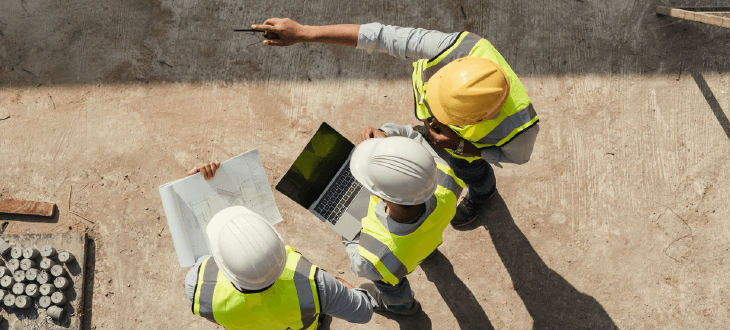
In the long run, hiring a structural engineer can save you money and stress during your hip to gable conversion.
Moreover, if your home requires planning permits, a structural engineer can assist with the application process and help design and review the structural elements of your property.
Moving a water tank may be necessary if you want to make the most out of your loft space.
In the UK, more than half of homes still have water tanks in their attics, which can be inconveniently placed at the centre of the space, making it challenging to convert your loft.
To maximise space, consider relocating your water tank to one of the sides of your loft, especially if you're planning a gable end loft conversion.
Damaged roof tiles can cause trouble in your newly converted loft. They can lead to leaks, causing water damage and exposing you to the elements.
Therefore, it is essential to inspect your roof regularly to check if any tiles need to be replaced. Signs of roof tile damage include the presence of moss or algae, loose slates or curling shingles.
Over time, your roof may also reach the end of its life span, and you may need to replace either a few tiles or the entire roof. So, keep this in mind and take necessary actions to avoid any potential damage.
Building Regulations and Planning Permissions
Hip-to-gable loft conversions are often allowed without planning permission. However, specific properties require additional checks before starting the construction process.
These properties include those located in World Heritage Sites, National Parks, and conservation areas.
If your property falls under any of these categories, it is advisable to hire an architect or structural engineer who can assist you with obtaining planning permission.
We recommend contacting the LPA through your local council to determine if you can proceed with construction.
Complying with building regulations when undertaking a hip to gable loft conversion is essential to ensure a safe building environment. Non-compliance can result in construction coming to a stop and a possible prosecution, with an unlimited fine as per the Buildings Act 1984.
A hip to gable loft conversion may require building approval if you are:
- Connecting electrics
- Installing a bathroom that will involve plumbing
- Changing electrics near a bath or shower
- Putting in a fixed air-conditioning system
- Replacing windows and doors
- Replace roof coverings
- Installing or replacing a heating system
- Adding extra radiators to a heating system
- Connecting electrics
- Installing a bathroom that will involve plumbing
- Changing electrics near a bath or shower
- Putting in a fixed air-conditioning system
- Replacing windows and doors
- Replace roof coverings
- Installing or replacing a heating system
- Adding extra radiators to a heating system
If you are still determining whether you need building approval, it is recommended to contact your local building control body for guidance.
In England and Wales, you can contact your local council's Building Standards service, while in Scotland, you can contact your Local District Council Building Control. Northern Ireland also has its own local District Council Building Control.
In addition to building inspection, if you live in a semi-detached or end-of-terrace home, you may be required to obtain a party wall award. If you suspect bats living in your loft, you may also need to consider this when planning your conversion.
Below is the breakdown of each that may add to the hip to gable loft conversion cost:
Building Inspections: A building inspection is necessary before construction can begin. Building surveyors will inspect the structure and integrity of your home and your neighbourhood. An inspection is also required during construction to ensure that safety requirements and regulations are being met.
The cost of inspection typically ranges between £500 to £900, depending on the complexity and size of your loft conversion.
However, you can avoid these costs by hiring a builder who is registered with the Competence Person scheme. This shows that a tradesperson can carry out work following building regulations.
Another benefit of using a registered tradesperson is that you can reduce your hip to gable loft conversion cost!
Party Wall Award: The Party Wall Act 1996 prevents disputes between neighbours who share a wall or adjoining buildings and ensures that the structural integrity of the shared wall is retained.
It applies only to residents of England and Wales. In Scotland and Northern Ireland, a party wall is considered to have an invisible line down the middle with both neighbours owning half, so there is no legal obligation or fee attached.
If you reside in a semi-detached or end-of-terrace home in England or Wales, obtaining a party wall award is mandatory.
However, your neighbour has the right to refuse a party wall agreement. In such a case, you will need to halt the construction immediately until you both come to an agreement.
If you ignore their refusal, you may be served with an injunction, and the legal cost of this injunction would fall on you.
A party wall award will cost around £1575 per wall for your loft conversion. This document specifies which work can happen, how and when it should be carried out, and who will pay for each part.
Bat Survey: IIf you suspect that bats are living in your loft, you must arrange a bat survey on your property. Bats are a protected species in the UK, and any harm caused to them or their habitat is considered a crime.
If you proceed with your loft construction without conducting a bat survey and harm any bats, you may be issued an unlimited fine and even face up to six months in prison.
You can arrange a bat survey through either the Chartered Institute of Ecology and Environment Management directory or the Environmental Data Services directory, as recommended by GOV.UK.
You must have a preliminary bat survey, which typically costs around £500.
If bats are found to be present on your property, a second bat survey is required, which may cost over £1,000, depending on the number of bats living within your loft.
Types of Hip to Gable Loft Conversions
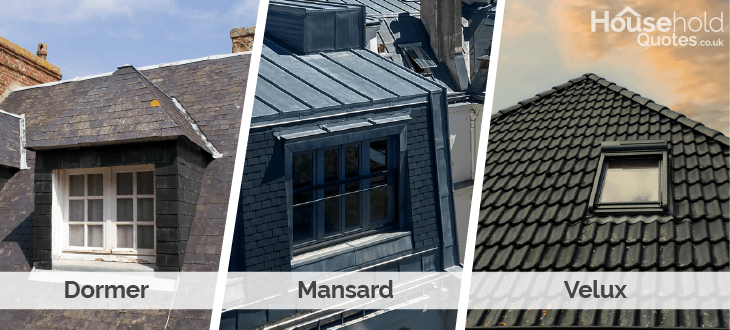
A hip to gable loft conversion offers so much potential for your home. It can transform a once underutilised dim attic into a functional loft room.
However, it's important to remember that this type of conversion has some limitations regarding available space. The interior slope of the roof can significantly reduce the usable floor and headspace in your new room.
If you are looking to add further space to your gable end conversion then there are other types of conversions that you can add to your hip to gable loft conversion.
While your hip to gable loft conversion cost may increase, these added features will provide you with more space and flexibility to create the room of your dreams.
We have broken down the costs and types of conversions you can add to your hip to gable loft below:
| Home Type | Dormer Conversions Costs |
|---|---|
| End-of-Terrace | £2,000 to £7,000 |
| Semi-Detached | £10,000 to £30,000 |
| Detached | £40,000 to £60,000 |
| Home Type | Mansard Conversion Cost |
|---|---|
| End-of-Terrace | £50,000 to £55,000 |
| Semi-Detached | £55,000 to £65,000 |
| Detached | £65,000 to £75,000 |
| Home Type | Double Hip to Gable Conversion Cost |
|---|---|
| End-of-Terrace | Not Applicable |
| Semi-Detached | Not Applicable |
| Detached | £90,000 to £100,000 |
Dormer Conversion: A dormer conversion is a box-shaped structure that extends from the existing slope of your roof. It is an excellent way to bring extra headspace to your loft.
There are several types of dormer extensions that you can choose to pair with your hip to gable loft conversion. The three most common types are gable dormers, hipped dormers, and flat roof dormers.
Mansard Conversion: A mansard conversion, also known as a French loft conversion, is an excellent way to maximise your home's space. This conversion type involves replacing the entire roof structure and removing its pitches.
The roof of a mansard conversion is almost horizontal, with a pitch of 72 degrees, providing a vast amount of space for your loft.
However, it's important to note that hip-to-gable mansard conversions require structural changes to your home, so you'll need planning permission.
Double Hip to Gable Conversion: Detached houses can extend their hipped roofs on both sides to create two vertical gable walls.
This type of conversion is known as Double Hip to Gable Conversion. However, if you share a party wall with your neighbour, you cannot obtain this type of conversion.
Velux Conversions: Velux conversions are a great option if you're on a tight budget and cannot afford a hip to gable conversion or other types that require extensive work on your roofline.
This conversion will create a living space within your attic but will not extend the existing roofline. This means that you won't be provided with any further space, but adding Velux windows will create a bright and more open atmosphere.
The average cost of a Velux conversion is £27,500, but may increase depending on how many windows you opt for and if you wish to include a bathroom. This conversion is the most affordable option for all budgets and home types.
Ways You Can Reduce The Costs Of Hip To Gable Loft Conversion

There are several ways to reduce the cost of your hip-to-gable loft conversion. You can save a considerable amount of money by setting a budget, understanding the materials you'll be using, consulting with professionals like an architect, and doing some DIY work like painting.
Here are some cost-saving tips to consider before starting your project:
Set a realistic budget: Understanding how much money you're willing to spend on your loft conversion is crucial to any conversion project.
Doing this, you can avoid unexpected costs and financial surprises as the project progresses. A well-planned budget can help you save money and ensure the project is completed successfully.
Plan for unexpected costs: Sometimes, a loft conversion process may be more complex than expected, and unexpected problems may arise, such as structural issues with your home or supply chain problems.
To prepare for such situations, allocating a contingency fund within your budget is recommended. This fund should be around 10-15% of the total project cost.
Having this buffer will enable you to adapt to any unforeseen challenges without compromising the quality or scope of your loft conversion project.
Consider different materials: If you're planning a loft conversion on a tight budget, opt for basic finishes and cheaper materials, such as softwood for your staircase, and simple designs.
This will help you keep the loft conversion cost down. However, keeping things simple doesn't mean your loft must look dull.
With the assistance of an architect, you can still achieve an aesthetically pleasing look while staying within your budget. They can guide you in selecting the right design elements to enhance the look and feel of your loft conversion.
Hiring an Architect: Local architects will work within your budget and set realistic goals for your hip to gable loft conversion. They will consider your budget and set realistic goals for your project.
The architect will design a solution that meets your needs, plan the materials, and obtain the necessary permits.
Moreover, they can leverage their expertise in the industry to help you find qualified, affordable, and trustworthy tradespeople.
Do it yourself: If you have some basic DIY skills, you can use them to reduce the cost of your hip to gable loft conversion. You can contribute by doing tasks such as painting, decorating, or even minor carpentry work.
By doing some of these jobs yourself, you can reduce the amount of money you would spend on labour costs for your project.
Financing a Hip To Gable Loft Conversion
Financing for a hip-to-gable loft conversion is an important aspect to consider. Understanding the available financing options can give you the freedom to choose and take control during your loft conversion.
Here are some financing options that you can explore with confidence:
- Personal savings: If you have enough saved up, using your savings is a straightforward option. However, it's essential to ensure that you have enough set aside for any unexpected expenses that may arise during the conversion process.
- Secured loans: Banks often offer home improvement secured loans with lower interest rates than personal loans. With secured loans, you use your home as collateral, resulting in lower rates for bigger loans. But you must make repayments to avoid losing your home.
- Unsecured loans: These loans don't require any of your assets to be offered as security. Unsecured loans tend to be smaller than secured loans, but they are a popular choice as they are quick to process and lack the insecurity of potentially losing your home. However, getting this loan type accepted may be more challenging if you have bad credit or work for yourself.
- Remortgaging: Remortgaging can be a viable option if you have at least 20% equity in your property. By refinancing your mortgage, you can release funds to finance your loft conversion while potentially benefiting from lower interest rates. However, it's important to note that, like secured loans, remortgaging your home will leave you vulnerable to having your home repossessed if you cannot make the payments.
With careful consideration and planning, you can confidently select the financing option that best suits your needs.
Compare Hip To Gable Loft Conversion Quotes
Gathering loft conversion quotes from reliable contractors is essential if you're planning a hip to gable conversion. Before making a decision, you should clearly understand the costs and details involved in the project. This will help you choose the best company for your needs while ensuring you receive a fair price.
We recommend obtaining at least four quotes to ensure you have an accurate idea of the average costs in your area. However, remember that price should not be the only factor in your decision.
It's crucial to consider each contractor's reputation, experience, and credentials. Make sure to compare quotations carefully, ensure they are like-for-like, and examine what each contractor provides for the price
The best contractors for your hip to gable conversion may only sometimes be the cheapest, but they will be worth the investment in the long run.
Our online service helps you get quotes from reputable contractors in your area, reducing hip to gable loft conversion costs.
- Describe your needs
- Get free quotes
- Choose the best offer
It only takes 30 seconds



FAQ
A standard hip-to-gable loft conversion of around 20-30 square metres typically cost £45,000. This price includes basic finishes, simple designs, and budget-friendly materials.
However, if you decide to go for a more extensive 40-square-metre loft conversion, including luxury materials, finishes, and bespoke furniture, the hip-to-gable loft conversion can go up to £80,000.
Most hip to gable loft conversions do not require planning permission. However, if you are living on a conservation site or protected land you will need to reach out to your local council to see if planning is permitted.
Hip to gable loft conversion takes between 8 to 12 weeks to complete. Due to the restructuring of the roof, it takes longer than other types of conversions, such as dormer conversions.
The process will slow down depending on factors such as property and loft size, availability of tradespeople, weather conditions and planning permissions.
The greatest expense of a loft conversion is the cost of the supplies, particularly the structural beams, joists, and masonry.
If you’re planning a hip to gable loft conversion, you should know that it involves extending the roofline to create a new vertical wall, which requires installing new beams, joists, and bricks.
Consequently, when you factor in supplies, the hip to gable loft conversion cost will significantly increase.
The most affordable type of loft conversion is the Velux loft conversion. This method lets you create additional living space within the existing roof of your house without extending or altering the roofline, which helps you save on structural supplies costs.
Typically, a Velux loft conversion may cost around £27,500, but this price can increase if you want to include a bathroom in your new loft space.

Caoimhe is an experienced content writer and researcher who is passionate about providing accessible information to every reader. With a background in English literature and Sociology, she combines the two disciplines to create cohesive, well-thought-out, and well-informed pieces.
- How Much Does a Hip to Gable Loft Conversion Cost in 2024?
- What Factors Affect the Cost of a Hip to Gable Loft Conversion?
- Building Regulations and Planning Permissions
- Types of Hip to Gable Loft Conversions
- Ways You Can Reduce the Costs of Hip to Gable Loft Conversion
- Financing a Hip To Gable Loft Conversion
- Compare Hip to Gable Loft Conversion Quotes
- Frequently Asked Questions
